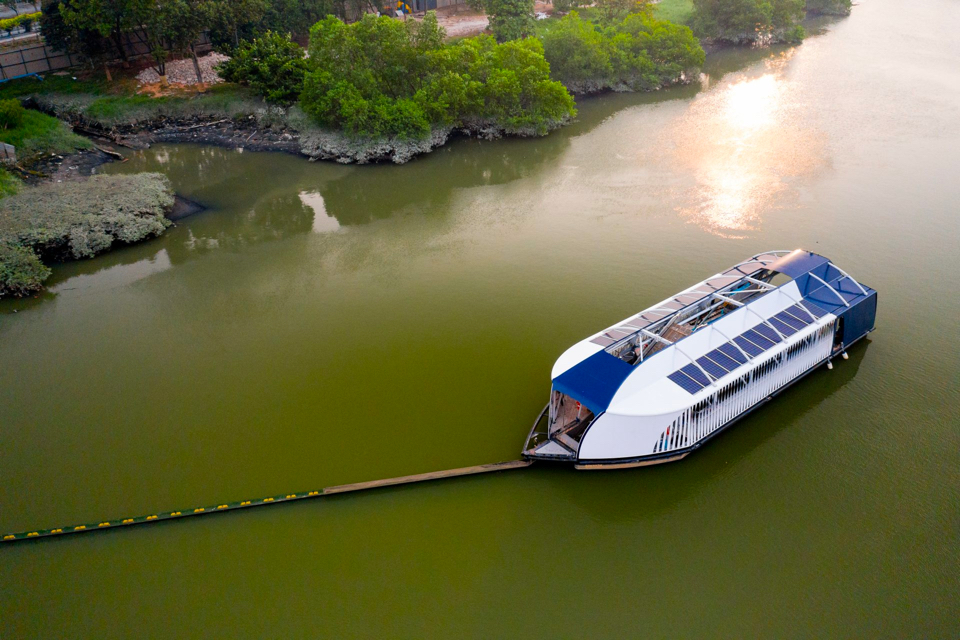The Ocean Cleanup now also plans to rid 1000 rivers of plastic before the end of 2025. Together these rivers are responsible for about eighty per cent of ocean plastic pollution. On Saturday, 26 October, the organisation unveiled its Interceptor, developed for this purpose.
During a live presentation, The Ocean Cleanup’s founder and CEO Boyan Slat unveiled his goal is not to become ‘the garbage collectors of the oceans’ but to put to put himself ‘out of business.’ He explains: ‘To truly rid the oceans of plastic, we need to both clean up the legacy and close the tap, preventing more plastic from reaching the oceans in the first place. Combining our ocean cleanup technology with the Interceptor, the solutions now exist to address both sides of the equation.’
50,000 kg of Trash Per Day
The Interceptor has been under development in secret since 2015. It is the first scalable solution to intercept river plastic pollution and can be deployed around the world. It is capable of extracting 50,000 kilogrammes of trash per day – even reaching 100,000 kilogrammes per day under optimised conditions.
Two Systems Operational
Four Interceptors have been built to-date; two systems are already operational in Jakarta (Indonesia) and Klang (Malaysia). A third system is in Vietnam to be installed in Can Tho in the Mekong Delta (Vietnam), while the fourth is destined to be deployed in Santo Domingo (Dominican Republic). In addition to these locations, Thailand has signed up to deploy an Interceptor near Bangkok, and further agreements are nearing completion including one in LA Country (USA).
Solar Powered
The Interceptor is 100 per cent solar-powered, with onboard lithium-ion batteries that enable it to operate day and night without any noise or exhaust fumes. The system is anchored to the riverbed to utilise the natural flow of the river to catch the plastic and is designed for 24/7 autonomous operation.
According to The Ocean Cleanup, its floating barrier that is used to direct the garbage into the system only spans part of the river so that it does not interfere with shipping. In addition, the organisation claims it does not harm the safety or movement of wildlife. An internet-connected onboard computer monitors the system’s performance, energy usage, and component health. The video below explains how it works.
Catching Plastic at Sea
In October, The Ocean Cleanup reported its latest ocean prototype was successfully catching plastic. This followed a months long delay after an earlier prototype broke down in December 2018 and had to be taken back to shore for repairs. The researchers had to correct the inconsistent speed difference between the system and the plastic which caused the floater to detach from the first prototype.
Picture: Interceptor 002 in Klang river, Malaysia.








